Bury St Edmunds |
A well-known and well-loved market town in rural Suffolk, with historic abbey and cathedral |
|
An Introduction to Bury St Edmunds in Suffolk |
In the 10th century, the Saxons built an abbey in Suffolk. This drew people in, who built houses, and before long an entire town had emerged there. This was to become Bury St. Edmunds, which today is probably the most well-known and well-loved market town in the county. If one of those founding Saxons were to visit the town today, they'd have no problems finding their way around. The layout of Bury St. Edmunds has barely changed.
In the past, the town was especially known for its market, and the present shopping area still provides plenty of opportunities for you to empty the piggy bank. The market takes place twice a week, selling flowers, various foodstuffs, and all sorts of other bits and pieces. High-quality meat, pies, and other items can be found at a shop called Barwells, which is popular with the locals. Saturday is a good day to visit, as they often give out free samples! Other local businesses include a chocolate shop, and a pearl jewellers.
In the evenings, you can take part in what is a surprisingly upbeat nightlife, considering the town's size. Many of the pubs and bars serve beers and ales from the local Greene King Brewery, which was founded here in 1799, and has gone on to become the largest British-owned brewery in the country. One pub that's especially worth trying is The Nutshell, which claims to be the UK's smallest! There is only room for a dozen or so customers to sit at any one time, although on one particularly notable occasion in the 80s, over a hundred brave people managed to squeeze themselves inside!
Whatever you get up to, Bury St. Edmunds is a fun and historic town that definitely ranks as one of the top destinations in the county.
|
Bury St Edmunds Street Map |
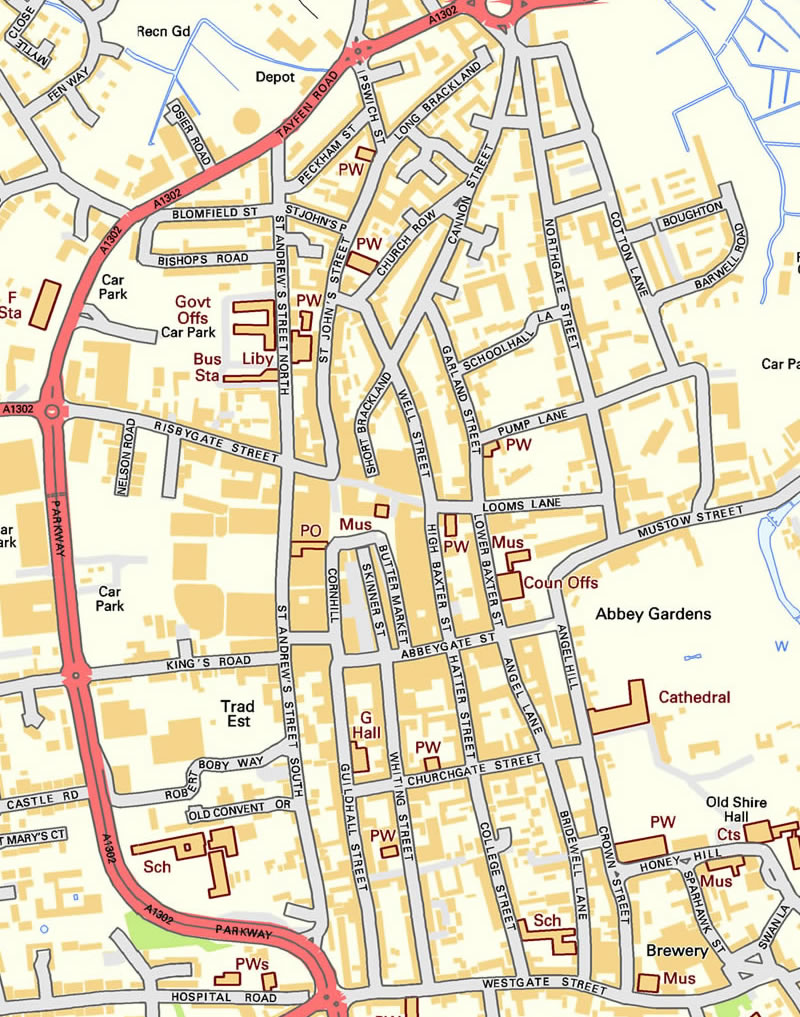 |
Bury St Edmunds Guided Picture Tour |
We start our tour of Bury St Edmunds at St Edmundsbury Cathedral, from which the town takes it's name. Although we know that a church has stood on this site since at least the 11th century, the age of the present building is difficult to judge because it has been the subject of frequent expansions, repairs, and other construction work. Most recently, a new tower was built, in a classic Gothic style. The cathedral is open to visitors most days and you can explore this large, historic building, which includes a museum. |
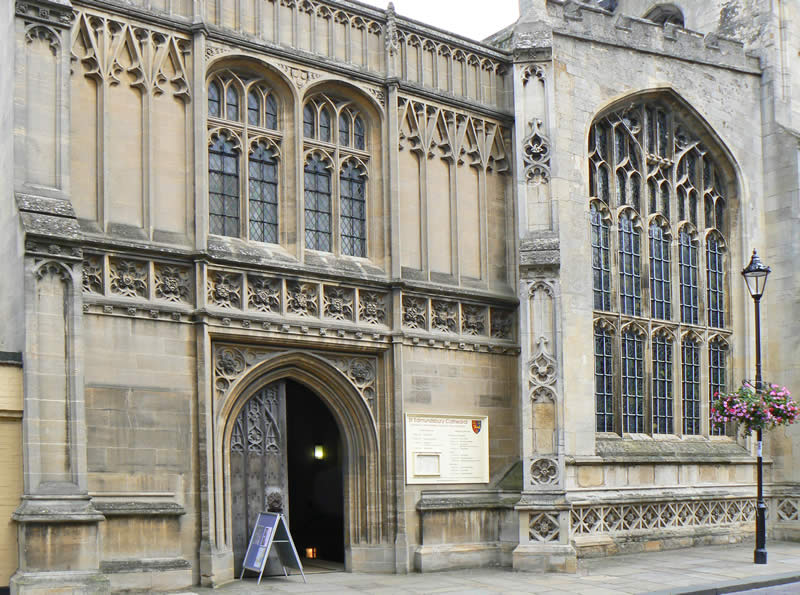
The entrance to St Edmunsbury Cathedral |
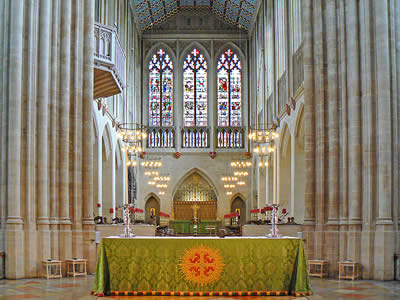
Inside St Edmundsbury Cathedral |
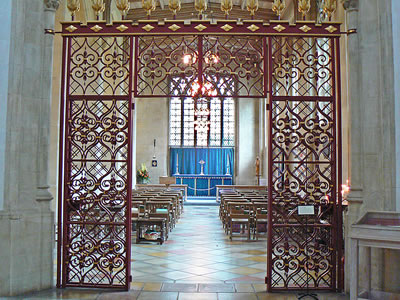
The Lady Chapel in the Cathedral |
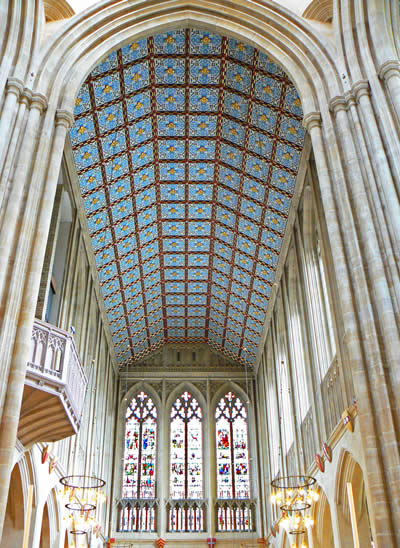
The magnificent roof |
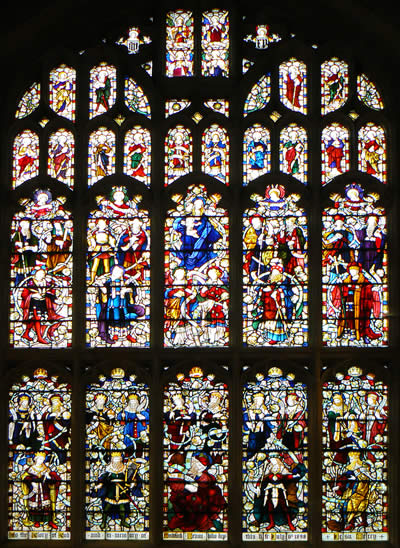
The main stained glass window |
Do you know the story of Kind Edmund? Way back in the year 869AD, Edmund was King of East Anglia. A great army of Danes attacked from the North and Edmund engaged them fiercely in battle, but the Danes had the upper hand and won. Stories tell how the victorious heathen Danes tried to force Edmund to renounce his Christian beliefs, but he refused. So they tied him up and shot him with arrows. He died a martyr and was buried in a shrine in what is known today as Bury St Edmund's. You will find churches dedicated to his memory all over England and he is the patron saint of Suffolk. |

The banner of St Edmund, depicting his story |
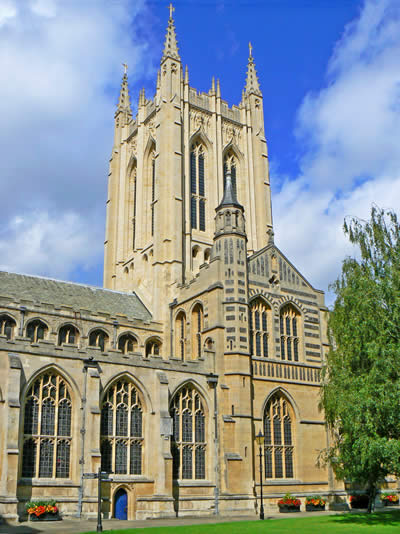
The Gothic Tower |
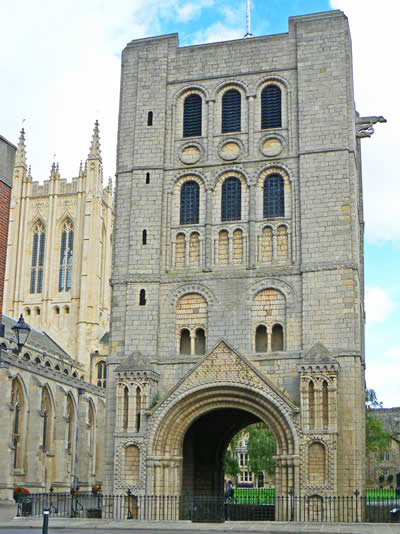
The Norman Tower and Gatehouse |
Bury St Edmunds Abbey is still a major landmark in the town, although over the past millennium it has unfortunately been reduced to ruins. However, it's definitely still worth visiting. The entrance is through a huge, 14-century gatehouse, which leads to the abbey's surrounding gardens. This is an extremely well-maintained place, featuring all sorts of flowers, trees, lawns, and wildlife. Several sections have a specific theme, including the rose, and herb gardens. One particularly popular area is the sensory garden, which was designed for the visually impaired. The plants here are chosen for their smell and feel, rather than just their looks. |
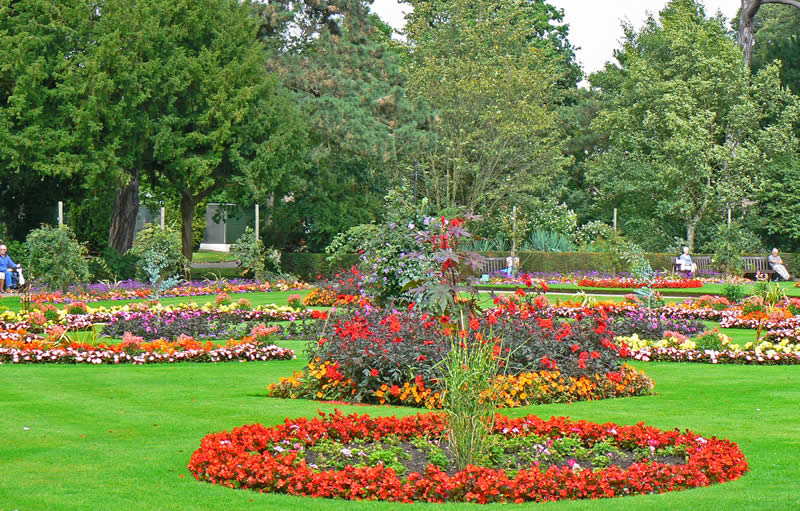
Bury St Edmunds Abbey Gardens |
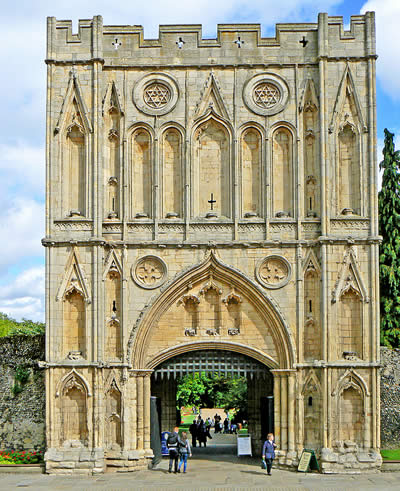
The magnificent Abbey Gate |
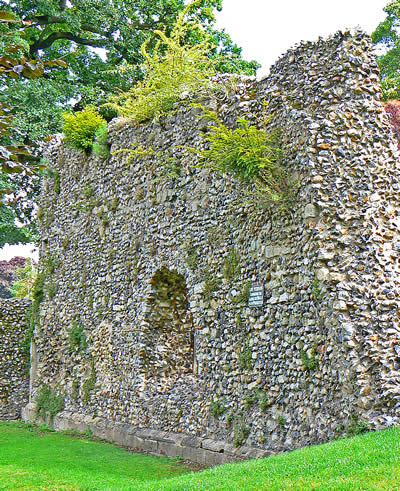
The ruins of the Abbey in the Gardens |
Not far from Bury St Edmunds, is the National Trust property of Ickworth House and Gardens. This unique property features a huge circular dome called the rotunda. Inside has barely changed; it was only ever used for special occasions, so its furnishings and decorations survived in near-perfect condition. The house is surrounded by formal lawns and gardens. |
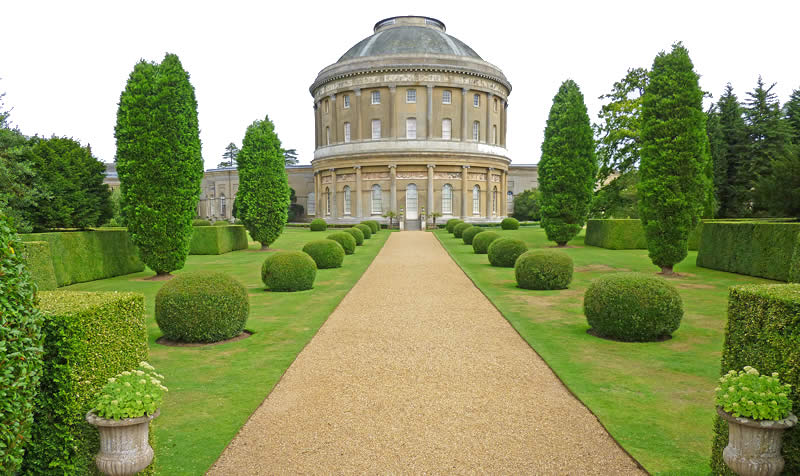
Ickworth House and Gardens |
|
GUIDED TOUR INDEX |
|
|
|
|
|
SUFFOLK PICTURE TOURS |
|
|
|
|
|
|
|
|
|
|
|
MAPS TO DOWNLOAD |
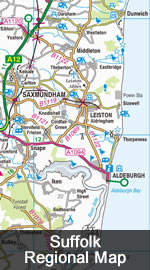 |
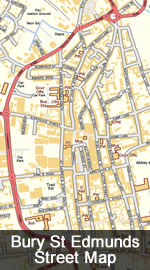 |
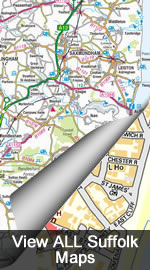 |
TOURIST ATTRACTIONS |
 |
WHERE TO STAY |
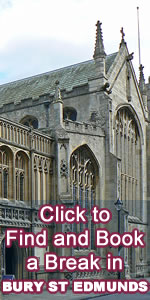 |
SUFFOLK HOLIDAYS |
 |
 |
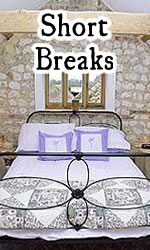 |
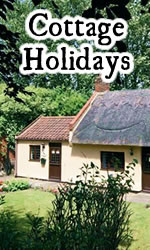 |
MORE OF OUR WEBSITES |
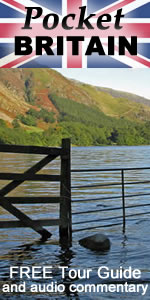 |
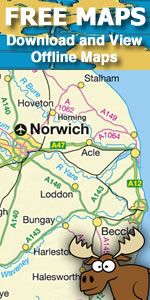 |
 |
| |
|

